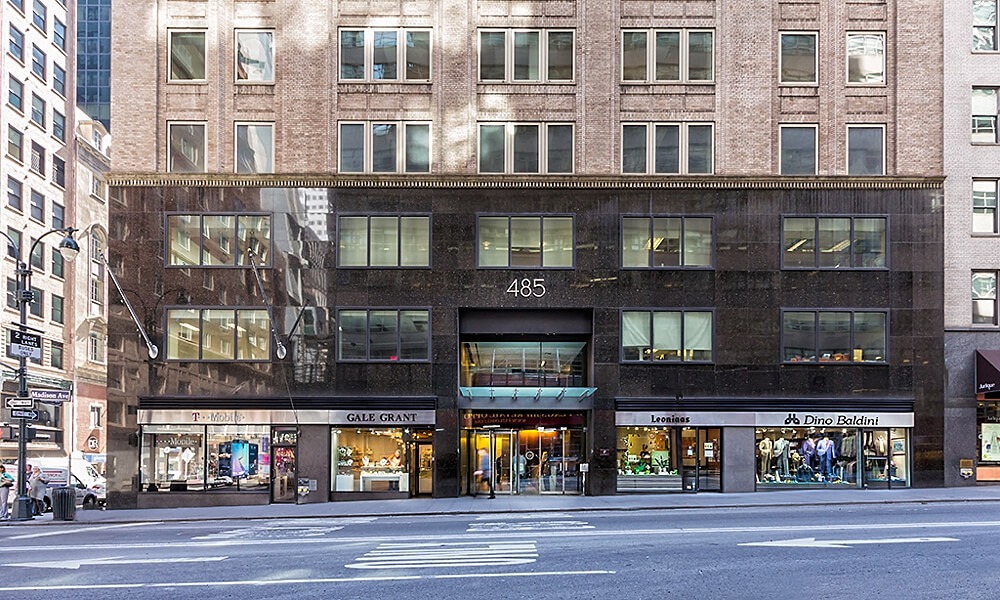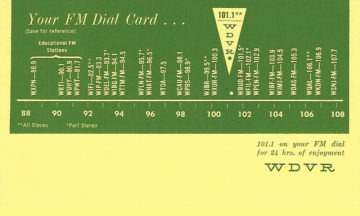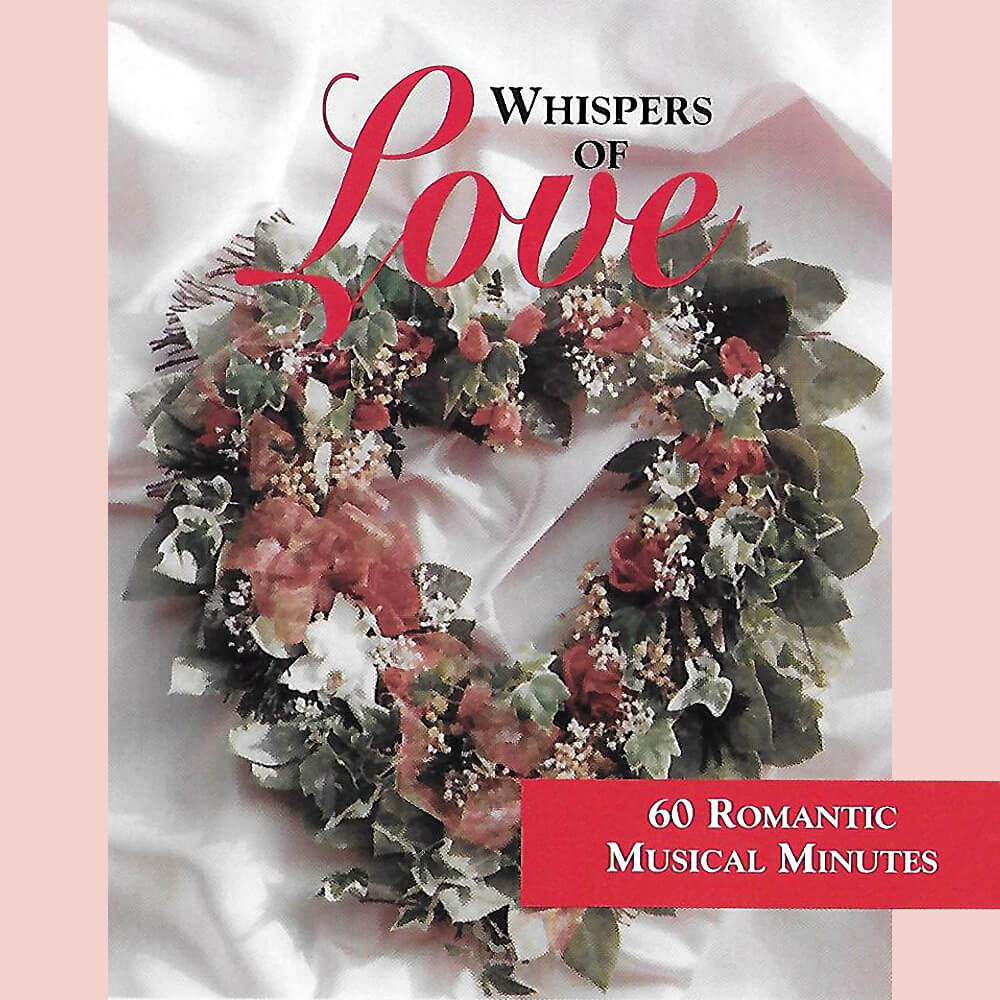Yes, March 30th, 1969, would be my first day of employment with Radio New York Worldwide, Incorporated, the owners of WRFM and shortwave station WNYW, from which the name stems, a wholly owned subsidiary of Bonneville International Corporation. And Yes, 55 years ago … and Marlin is still walking and talking!
The weekend preceding this, the recently-appointed WDVR general manager Jerry Michaels and I drove to Washington, D. C., to attend the annual convention of the long-defunct National Association of FM Broadcasters. As I write in my radio career memoir:
“Since I was about to take on a rather high-level and visible position in FM radio in the nation’s number one market, I felt it made sense to attend this event. The most memorable part of the week—the only thing I really remember other than where it was held—was meeting up with Jack Masla, who headed a national radio advertising sales representative firm that represented WTFM, which would be our number two competitor behind WPAT.
I don’t remember whether it had been announced that I was joining WRFM or whether I told him. Regardless, when he inquired if I planned on airing programming similar to that at WDVR and I said “yes,” he let out a giant laugh and advised me to stay in Philadelphia, as ‘there was no way we would overcome the odds in New York.'”
From Radio … My Love, My Passion
First, though, let’s go back to the genesis … I had been in New England for two years when in the Spring of 1968, Jerry Lee asked me to return to WDVR in Philadelphia to “right the ship,” as significant problems had developed on both the programming and business sides of the station … which, providentially, I did. However, by the time four months had passed, all issues had long since been addressed and corrected … and the new Arbitron report had produced some of the best audience ratings in the station’s history.
So, what was Marlin to do next? Just up the road was #1, the Big Apple! I got my hands on a New York market Arbitron report and found that the two FM stations with the best signals, based on signal strength as well as the least amount of on-channel or adjacent channel interference, were the two poorest performers audience-wise, WNBC-FM and WRFM. This led to my writing to top management of both the National Broadcasting Company and the Mormon Church’s Bonneville International Corporation, citing the successes we had achieved in Philadelphia — both in audience and revenue, the highest in the nation in both areas for an FM station — and that I was confident I could lead their New York station to the same kind of success.
It wasn’t long before I heard from Bonneville President Arch L. Madsen, who was under great pressure — as I would later learn — to turn WRFM into a profitable operation. He was coming to Philadelphia to visit the Freedoms Foundation at Valley Forge … “Could I pick him up at Philadelphia’s airport, and we could chat as I drove him out to Valley Forge?” Of course, I could and did. We had what he called a very productive conversation, and I should expect to hear from Paul Bartlett, the present manager of WRFM and its sister shortwave station WNYW.
Paul was an old-time broadcaster, having built and operated KFRE-AM, FM, and TV in Fresno. After selling and retiring, he got bored (I know what that’s about) and, having a genuine interest in shortwave broadcasting, believed he could bring WNYW to profitability. Since he and Mr. Madsen were longtime friends, he was given the opportunity to take on the challenge. Sadly, his efforts were no more successful than previous ones. Moving on, Paul re-focused on improving WRFM. Being from California, he was well aware of KPOL in the Los Angeles market and their success with an Easy Listening format … so chose to copy it, seeing it as having potential for WRFM in New York.
And that’s the musical format that I inherited. He had told me that he had faith in the format and that, given time, it’d produce notable results. Here’s how I address it in the memoir of my radio journey …
“As noted earlier, the sound WRFM was airing wasn’t terrible musically, but it wasn’t really in harmony with what (as I intuitively knew and as had been confirmed by my Philadelphia and Boston successes) the public was really hankering for; in addition, the lack of discipline on the part of the air staff was a major negative.”
I first visited WRFM — which was located at one of the truly legendary radio addresses in broadcast history, 485 Madison Avenue, shown above — and met with Paul around Christmastime 1968. I knew he was not in any hurry to take action, as he knew when he wanted to depart, but agreed that we’d meet again. At Mr. Madsen’s urging — who wanted to get on with change — I was called back to New York in February, and Paul and I agreed on terms of my employment, with a start date around the beginning of April.
When I finally arrived on the scene, Paul indicated I should settle in and plan, but made clear he was still in charge — at first, I didn’t recognize how serious he was about retaining full control. As I write in Chapter 9 of RADIO … My Love, My Passion …
“However, I quickly learned that I had plenty of time to plan, as there weren’t to be any visible — or should I say audible — changes made until Paul Bartlett had left the premises. I don’t remember exactly what it was, but I made a minor adjustment in the overall sound, likely in the music mix. Whatever it was, it quickly caught Paul’s ear and brought my first dressing down, in that when he said “no changes,” that indeed meant nothing was to be changed until his watch had ended.”
Years later, as I thought back, Paul’s reasoning was likely that with his format remaining fully in place, if the next rating report showed an increase in listenership, it would support his belief that he’d put the station on the right track. The next Arbitron report, the Spring 1969, showed no change … nor did the Summer report, where the format change came in the middle of the survey period.
While this waiting time spanned nearly three months, it was not wasted … it allowed plenty of time to remedy the music library’s deficiencies, work out staffing changes plus scheduling of the extensive non-talk elements required in response to commitments that had been made to the Federal Communications Commission; we also needed to design the dial cards (of which we had three editions), get them printed and prepare a team for placing them in locations within a 50-mile radius of the Empire State Building, beginning promptly after the new format installation. I also needed to find a suitable home for the family in Bergen County, New Jersey, which offered a fairly easy commute into the city. During this time, Paul was also doing his part by cancelling the number of specialty shows which dotted the schedule and disrupted the continuity of the primary format.
Then, finally, as I write in the book …. The date was announced:
“Sometime in June, Paul announced that he’d be departing on July 3, so as to be home for the Independence Day weekend. So that became our D-Day — the day I’d been preparing for. Paul walked out the door for the last time on that morning, and the new format structure and music mix were instituted at noon.”
July 3rd … 12 Noon … 1969 … Marlin’s musical sound and formatting concepts — there was no secret formula, we simply considered everything from the aspect of the person listening, his or her best interests — hit the air, for all New Yorkers to hear … and soon, our FM dial cards would be flooding the entire region.
Why three cards in three different colors? Due to the geographical shape as well as the terrain of the New York region, it made sense to us to have specific station listings for Long Island as well as “further out” New Jersey. All major New York Metro stations were listed on all cards; however, the stations down the New Jersey coast and out on Long Island tended to be lower-powered, and in a number of cases, there were stations in each region located on the same frequencies due simply to the mileage distances between the two areas. (You’ll find out more about the evolution of the FM Dial Card in last week’s Musings.)
During this change, when the guys on the air went from being “personalities” to fulfilling the role of warm-and-friendly-voiced announcers, we lost one member of the air staff. However, his is the only voice of the group still being heard today … on things such as the PBS patriotic specials and NBC specials such as the Olympics, Thanksgiving Day Parade, and the like. You’ll hear his voice, and you’ll see his name in the credits, but you’ll never see his face. Next time one of these specials airs, look for his name … Les Marshak!
That’s how this country boy from Pennsylvania got to the Big Apple. By Christmastime 1969, WRFM was counted among the 10 most-listened-to radio stations in the Nation’s #1 market. I will always be thankful to Arch L. Madsen for placing his faith in me and giving me this opportunity of a lifetime!
To this day, I still look back upon my brief two years at the helm of WRFM in New York City as being the most significant highlight in my radio broadcasting career, with my role in the startup of satellite radio being not too far behind.
Along with Arch Madsen placing his trust in me to lift his bottom-ranking station up to a place of prominence in the Big Apple, before him were two other similar situations where this fellow without a whole lot of experience or training was entrusted with managing their stations properly and with a degree of professionalism . . . David L. Kurtz, the owner of WDVR Philadelphia, and before him, William Tynan and Bob Carpenter at WHFS in Bethesda, Maryland/Washington, D. C. All of which happened within a span of eight years!
Image Credits: 485 Madison Ave, New York, NY 10022 courtesy of LoopNet.com





The right man at the right time. Bravo!
I was there! My first job in Radio doing production. Congratulations Marlin!
Thanks, Mike … I remember you well. I inherited and had a great team of caring and hard-working of folks at WRFM, for which I was so thankful – they certainly played a role in our success and rapid rise to the pinnacle of NYC radio!
It was about 50 years back that I met you at Bonneville Owned and operated KIRO-FM in Seattle.
Always thankful for your professional friendship.
My last business trip to NYC in 2014 I stood at the doors of giants, CBS, Bonneville and you!
Claude, Claude … ever since you had that great learning experience at KIRO-FM, you’ve stayed in touch over these past 50 years! Thanks for checking in.
Stay well, keep on rolling and having fun.
I remember that same time frame too. I was selling spots on KSL-FM and observing the expansion of Bonneville. It would be the year
after your recollections of 1969 when I was moved by Arch Madsen
to Seattle – along with a name you will certainly remember – Joe
Dorton. I remained at KIRO-FM, calls later changed to KSEA before
my next Bonneville move to KOIT. Great stations which you programmed to success. THANKS FOR THE MEMORIES
Dick Dixon
Thanks, Dick … good to hear from you and happy to have worked with you in Seattle and San Fran!
You reference Arch Madsen, the man you and I both are thankful to for giving us the opportunities he bestowed upon us. It was with very mixed emotions that I gave up the managing of WRFM to take on the new challenge of programming and consulting of the Company’s other FM’s.
Mr. Dixon,
Thank you for the opportunity to help “tune up” the audio sound of KIRO-FM and KSEA. I valued your guidance and professional friendship then.
Peace,
Claude Rorabaugh.